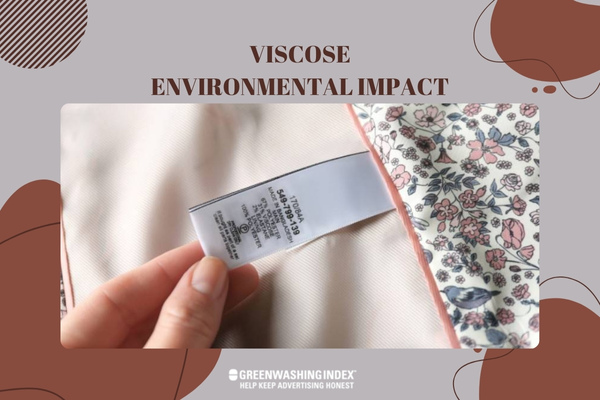Have you ever fallen in love with the soft touch of a silky fabric, only to discover that it’s viscose? I have, and let me tell you, it’s more than meets the eye. While viscose drapes like a dream and feels luxurious against the skin, viscose’s environmental impact casts a dark shadow on my wardrobe choices.
When diving into sustainable textile talk, there’s always chatter about eco-friendly this and green that. But how often do we look behind that shiny veneer? Stay with me as I pull back the curtain on why sustainable clothing enthusiasts give viscose side-eye.
Why is verse considered bad for sustainability? At first glance, one might think the viscous fabric is rather eco-friendly. After all, it comes from trees – natural right?
However, once I understood the whole story behind its production process and Viscose Environmental Impact, I saw things differently. It turns out that creating this silky material can harm forests and use dangerous chemicals – not good at all!
Simply put: while my viscose shirt feels smooth as silk to wear; its creation isn’t quite so smooth for our planet.
What Exactly Is Viscose?
Viscose is a type of fabric many people know. It looks like silk and feels soft. But, it’s not made from worms like silk is. Viscose comes from trees. Yes, trees! To make viscose, people do something quite special to wood pulp. Wood pulp is a kind of mashed-up wood that looks like a thick paste.
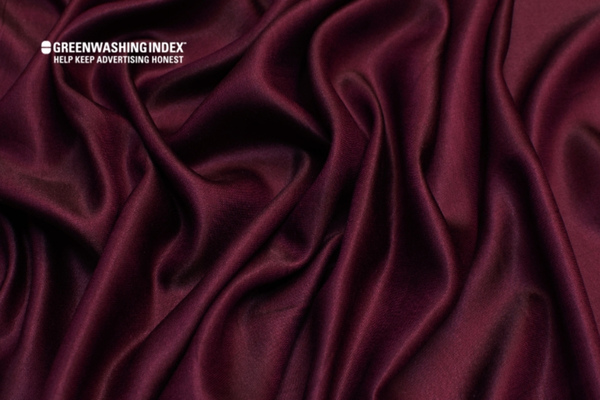
Here’s what happens:
- Wood Pulp: People take certain trees and make them into wood pulp.
- Chemical Bath: This wood pulp then gets washed in chemicals.
- Spin into Fibers: After that, they push it through tiny holes to make fibers.
- Weave into Fabric: These fibers get spun around to make threads, which are then woven to create the fabric.
This might sound okay, but actually, it uses a lot of resources and can hurt the planet.
Understanding the Production Process
Making viscose is interesting but heavy on details:
- First off, folks use trees – usually ones that grow back fast as they’re cut down for this process.
- Next up are chemicals; they come in now because scientists found out that you need some harsh ones to turn that tree mush into something we can wear.
- Then these threads go through machines where they are stretched and spun super tight.
- Lastly, there’s weaving – putting those tiny threads together so tightly that it makes a whole piece of material.
All this takes machines, water, energy – lots of stuff from our Earth.
The Dark Side of Viscose Manufacturing
Making viscose seems great with its silky smooth texture and all. But wait—there’s trouble brewing behind this silky veil when we talk sustainability:
- First off: Chemicals again! They’re not friendly ones either – we’re talking about types that can be pretty bad for our planet.
- Then: Wasting tons of water during cleaning and making this stuff takes its toll on Earth too since water isn’t unlimited!
- Don’t forget those poor trees getting chopped – it says ‘bamboo’ or ‘eucalyptus’, but does anyone check if they were grown right? Sometimes forests get hurt because people want more viscose.
So while wearing viscose might feel good because it’s soft on your skin; when you think about these points – maybe not so much for Mother Nature!
Also Read: Environmentally-Friendly Camping: Your Ultimate Green Guide
The Environmental Impacts of Producing Viscose
When we look at what clothes are made of, viscose often pops up. To many, it’s a surprise that this silky material may not be so eco-friendly. The truth is, that viscose has quite an impact on our environment. Let me tell you why.
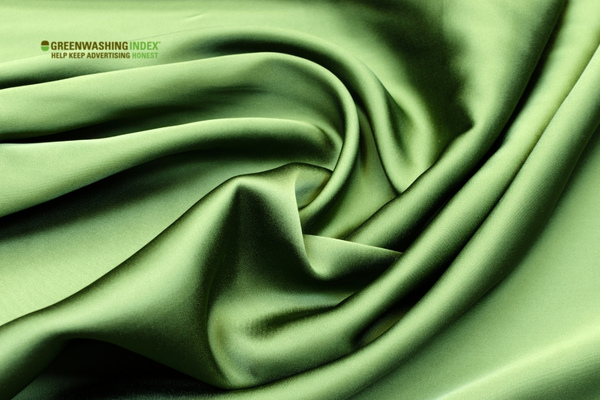
Deceptive Eco-Friendly Facade: The Reality
At first glance, you might think viscose is green because it comes from plants. But, when you dig deeper into the “viscose environmental impact,” the picture gets darker:
- Trees Cut Down: To make viscose, lots of trees get chopped down. This isn’t good because those trees could clean the air or offer homes to animals.
- Heavy Water Use: Lots of water goes into making this fabric. When water is used like this, there isn’t as much for people to drink or for fish to swim in.
- Waste and Pollution: Making viscose creates waste that can hurt nature. Bad chemicals get into rivers which can kill fish or make wildlife sick.
Destroying Forests for Fashion
Deforestation means cutting down forests, and sadly, fashion plays a part in this:
- Loss of Natural Homes: Forests are where animals live and plants grow tall and strong. When these forests are cut down for viscose production, these creatures lose their homes.
- Fewer Trees Means More Carbon: Trees suck up carbon dioxide – a gas that warms the planet too much when there’s a lot of it in the air. Fewer trees mean more carbon stays in the air.
- Soil Gets Worse: Forests keep soil healthy so new plants can grow well – without them; soil just isn’t as good anymore.
Chemical Controversy in Viscous Production
The viscous fabric feels soft but getting it to that point involves some harsh stuff:
- Dangerous Chemicals Are Used: Chemicals like carbon disulfide are needed to turn wood pulp into viscous fiber but they’re really bad to breathe in and can make workers sick.
- Polluted Waterways: These nasty chemicals often end up in rivers after they’re used which means water critters have to live with this poison – not fair at all!
- Endangering Communities: People who live near factories where viscous is made often find their local environment ruined by pollution which isn’t just sad – it’s dangerous too.
It’s clear that behind its smooth touch, creating viscous fabric demands more from our planet than we should be willing to give if we truly care about sustainability. It’s important we choose wisely when picking fabrics if we want an eco-friendly wardrobe!
Also Read: Lithium-Ion Battery Recycling Guide: Ultimate Sustainability Tips
Comparing Fabrics: Where Does Viscose Stand?
As someone who keeps an eye on eco-friendly textile choices, I often come across questions about where viscose stands in the world of sustainable fabrics. To understand this, let’s compare viscose with two common materials—cotton and polyester.
Viscous vs Cotton vs Polyester – A Sustainability Showdown
Viscose is a semi-synthetic fabric, which means it’s not entirely natural or synthetic. It comes from cellulose, often sourced from wood pulp. Now let’s see how it stacks up against cotton and polyester.
- Cotton: This is a natural fiber known for being breathable and soft. When we talk about its environmental impact, though, conventional cotton farming can be quite demanding. It typically requires lots of water and pesticides.
- Polyester: On the other end is polyester—a fully synthetic fabric made from petroleum-based products. It’s durable and cheap to produce but can be harmful to the environment because it takes hundreds of years to break down.
And then there’s viscose, sitting somewhere in between these two.
Comparing Environmental Impacts
When it comes to sustainability, each material has its own story:
- Water Consumption:
- Cotton: Needs tons of water to grow the plants.
- Polyester: Requires less water in production but contributes to microplastic pollution in our waters.
- Viscose: The production process uses lots of water too.
- Chemical Use:
- Cotton: Uses many chemicals unless it’s organic cotton.
- Polyester: Chemicals are essential in making this material since it’s plastic-based.
- Viscose: Heavy chemicals are used to turn plant pulp into smooth fibers.
- Energy Use:
- Cotton: High energy use during farming stages due to machinery used for harvesting.
- Polyester: High energy consumption as oil extraction and processing are involved.
- Viscose: Less energy compared with polyester but still significant due to its complex processing needs.
When laying everything out side by side like this, we begin seeing why there are sustainable fabric concerns regarding viscose’s environmental impact—as well as issues with both cotton and polyester. All fabrics have drawbacks, but educating ourselves helps us make better eco-friendly choices moving forward.
Whether we look at how much water or energy is used or how chemicals play into their creation—each material impacts our planet differently. Viscose might sound good as it starts from a natural source; however, its transformation involves processes that aren’t too kind to our environment either.
Also Read: Cotton Biodegradability: Eco-Friendly or Ecological Burden?
Addressing Misconceptions about the Stretchiness of Fabrics
When we talk about clothes, some words pop up quite a bit, like “stretchy”. Stretchy means that a fabric can be pulled and it will go back to its shape. People often mix up different kinds of fabrics and think all stretchy materials are the same when it comes to being good for our Earth.
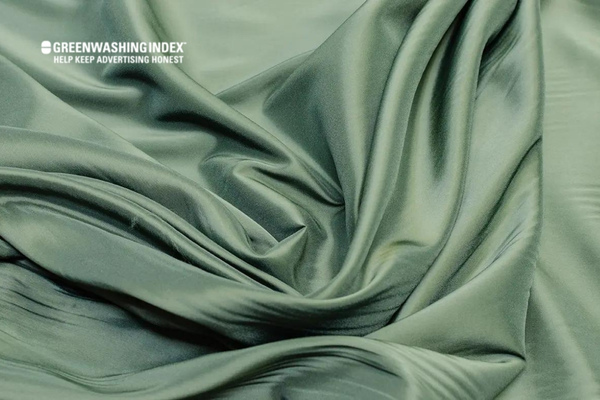
This is where we need to set the record straight about one type in particular – viscose.
Is Viscose Really as Stretchy as They Say?
Now, what exactly is viscose? It’s a type of fabric that’s made from trees or plants. Many folks believe it’s very stretchy. But here’s the thing – viscose isn’t super stretchy by itself. It gets its bit of give from how it’s woven or sometimes when it’s mixed with other stuff like spandex.
But does this little bit of stretch help or hurt our planet? Let’s dig deeper:
- Water Use: To make viscose soft and with a tiny stretch, producers use loads and loads of water. More water use means less water for other stuff we need, like drinking or growing food.
- Chemicals Goodbye: Imagine cooking but throwing most of your ingredients away – making viscose is like that but with chemicals. A lot gets wasted and can hurt nature.
- Tree Talking: As said before, trees become viscose after a really complex process (think cooking but more complicated). If too many trees are taken without care, birds and animals could lose their homes.
- Not-So-Easy Recycling: Stretch often means mixing materials together which can be tough to split later down the recycling road.
In simple words: even if viscose might feel nice with its slight stretchiness, this perk doesn’t do much for Mother Earth because…
- The process uses up lots of important resources,
- Harmful chemicals come into play,
- It relies heavily on trees which are crucial for a healthy planet,
- And once you’re done wearing it, recycling becomes tricky.
These details highlight how stretching the truth about fabrics like viscose doesn’t help our planet get any greener or better for future generations.
Talking ’bout sustainable fabric concerns isn’t just small talk; it’s about knowing what goes behind the scenes so each one of us can make eco-friendly textile choices that help keep our Earth spinning happily!
Also Read: Bamboo Fabric: Sustainable Fashion’s Savior or Slip-up?
Weighing Up Viscose Fabric
When I take a look at fabrics, it’s like looking at two sides of a coin. One side shines with the silky smooth touch of viscose. But then there’s the other side – it’s about how eco-friendly and kind to our planet the fabric is.
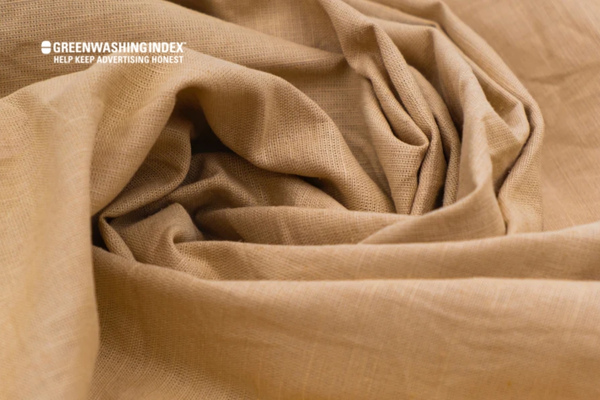
This is where I have to think about something called “sustainability.” Being sustainable means making or using things in a way that doesn’t use up or harm natural resources. It lets us live our lives without hurting future generations.
All That Glitters Isn’t Sustainable Gold
Viscose looks really nice, but just because something looks good, doesn’t mean it’s good for the earth. To be truly sustainable, a fabric has to check off some important boxes:
- How It’s Made: A big yes for sustainability is when making the fabric doesn’t need too much water or energy.
- What It Does To Nature: If a fabric can go back into the earth without causing any trouble, that’s great! This means it should break down naturally over time.
- Safe for People and Earth: Chemicals can be harsh on nature and on people who make or wear the cloth.
Now let me tell you why viscose falls short:
- Factories that make viscose use lots of water and energy which isn’t very good if we want to save our planet.
- They also use chemicals that can hurt our world – like carbon disulfide, sulphuric acid, and more nasty stuff.
- Even though viscose comes from plants (making it a cellulosic fiber), those plants sometimes come from forests being cut down (that’s not eco-friendly!)
So there you have it, while viscose may feel soft as silk and have an appealing shimmer, its environmental impact makes me second guess its place in my closet if I’m trying to be kinder to this beautiful blue ball floating in space we call home.
Also Read: Mattress Disposal: Easy Steps for Eco-Friendly Solutions
Industry Response to Sustainability Concerns
Facing growing worry over the “viscose environmental impact,” folks who make and sell clothes are trying hard to fix issues tied to this silky fabric. They know people want clothes that don’t harm our earth. That’s good news! So, I want to tell you about the smart steps these makers are taking.
How Are Manufacturers Reducing “Viscose Environmental Impact”?
1. Chooser of Wooden Pals:
Makers of viscose are starting to pick wood from better places. That means they say no to trees from old or vanishing forests. They find wood from farms that grow trees just for this reason, not stealing from nature.
2. Nicer Chemical Dance:
Usually, turning wood into viscose needs some tough chemicals. These can be mean to our planet and our health if they get out into the air or water. Now, people in charge are changing this dance step by step – using fewer chemicals, safer types, or finding new ways without any harsh stuff at all.
3. Water-Loving Ways:
Making viscose often drinks up lots of water and then spills it back dirty. Not good! Factories are learning how to be more water-loving by cleaning and using the same water over and over again.
4. Seeing Energy Differently:
Heavy use of power is another problem in making viscose silky smooth fabric for us all. The folks behind it all now try harder to lower electricity use or get power from the sun or wind – much kinder choices for Earth.
5: Circle Back with Leftovers:
Here’s something really neat – instead of tossing leftovers away after making viscose, why not turn them into something useful? Some bright minds in factories are doing just that!
As I look around, I see these steps slowly helping make wonderful changes in how we enjoy fine fabrics without leaving big footprints on our beautiful Earth’s face.
FAQs
Can recycling make viscose more sustainable?
Yes, recycling can help. But for viscose, it’s tricky because of the harsh chemicals used in its creation. If we can find better ways to recycle it without harm, it’ll be a good step.
What are the leading certifications that identify sustainable textiles?
Look for labels like the Global Organic Textile Standard (GOTS) or OEKO-TEX. These show that the textile meets high eco-friendly standards.
How can consumers play a role in reducing the negative viscose environmental impact?
Simply by choosing wisely; buy less and opt for clothes from sustainable brands. Also, encourages companies to improve their practices toward better sustainability.
Conclusion
After diving deep into the world of fabrics, it’s clear that viscose’s shimmering facade hides some ugly truths. Though silky and versatile, the environmental toll it takes is too great to ignore. From the loss of precious forests to the chemicals polluting our waters, each step in viscose production challenges its so-called ‘eco-friendly’ status.
The shift towards more sustainable practices in textile manufacturing doesn’t just stop with choosing organic cotton or recycled polyester over viscose. It’s all about understanding each material’s full life cycle and making choices that prioritize our planet’s well-being over temporary trends.
While we all love to look good and feel comfortable in our clothes, we must also consider their long-term impact on Mother Earth. It’s our responsibility to stay informed and opt for truly eco-friendly textile choices whenever possible.

